The Idea of Home
During the 1980s, a number of initiatives focused on even deeper dimensions to the idea of "home."
When support to people in their own homes is more available, more attention could be placed on issues such as ownership, control of space, security of tenure, and choice about where to live, with whom, and with what support.
Some of the strategies developed in the 1980s to promote greater control by people with disabilities over their housing included:
- developing and participating in housing cooperatives
- purchasing homes through housing associations
- the use of trusts (family trusts, private trusts, community land trusts)
- the use of housing vouchers and subsidies (HUD Section "8" subsidies, "bridge" subsidies through state, regional and county offices responsible for people with disabilities, and subsidies developed in conjunction with HCBW programs)
- housing modifications, and
- creative use of funding sources.
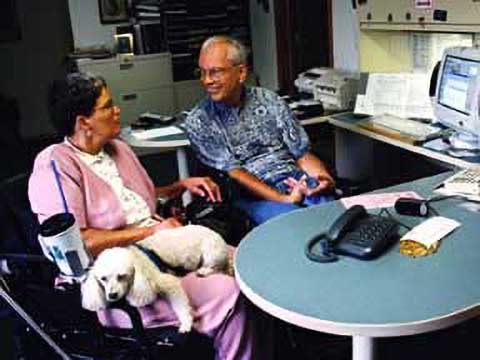
Photo courtesy Ann Marsden
Among other outcomes, these initiatives led to the development of the National Home of Your Own Alliance in the 1990s.
The fact that smaller and smaller settings were developing does not mean that this was universal. There were also deinstitutionalization efforts that could be characterized as "one size fits all."
Clarence Sundram offered the following perspective on the 1980s experience in New York:
"The unfortunate lesson that fiscal policymakers seem to have learned is to close institutions and close them quickly, and to look for economies of scale in the development of large community residences of standard size and even larger day programs…
"In short order, the demands of convenience and efficiency produced a public policy that has resulted in a proliferation of 12-bed residences all over the state, to the virtual exclusion of other residential options.
"We seem to be approaching a policy much like Henry Ford's in producing the Model T: 'Any color you want, as long as it's black.'
"What happened to the individualization that we all fought to have required by law… What happened to normalization?"
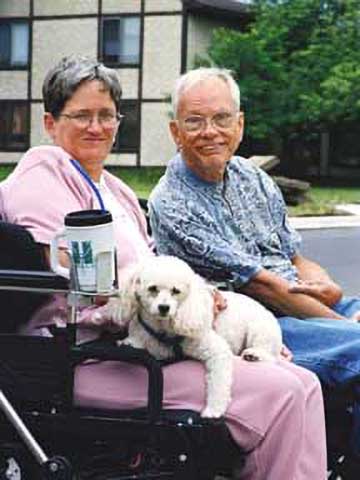
Photo courtesy Ann Marsden
Family Support Broader Meanings
During the 1980s, family support took on broader meanings. The range of family support services was seen in ten broad categories:
- Outreach (information and referral, prevention and public information)
- Training of family members and other caregivers (including specialized behavioral and developmental services, sibling services)
- Counseling (genetic counseling, personal adjustment, family dynamics)
- Respite (day or overnight, in-home and out-of-home, sitter companions, host families, parent exchange networks)
- Transportation
- Special assistance services (home habilitation, home care, and nutritional services)
- Financial assistance
- Housing assistance (adaptive equipment and home modifications)
- Recreation
- Crisis Intervention.
The Home and Community Based Waiver and "Katie Beckett" Amendments opened the door for increased family support programs and approaches.
The use of vouchers and cash subsidies to families in the 1980s laid the groundwork for ever expanding power in the hands of families to control the nature of the support they receive.
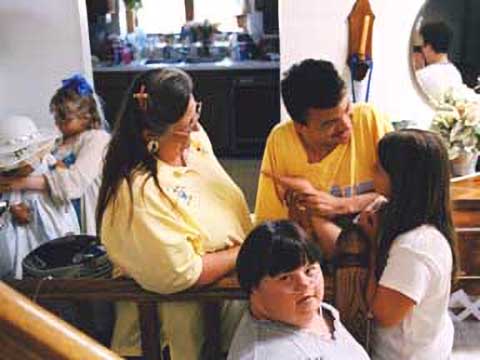
Photo courtesy Charyl Walsh-Bellville
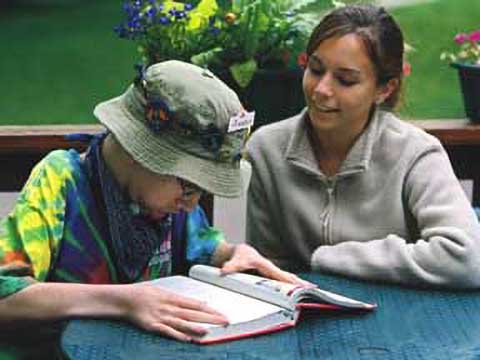
Photo courtesy Charyl Walsh-Bellville
Michigan's Family Support Subsidy Act set the pace in 1983. The Act provided for monthly payments to families with children with severe disabilities.
The program focused on reducing out-of-home placements. By 1998, 21 states reported using cash subsidies and another five developed new subsidy programs providing families with more flexibility and discretion in how their family support funds are spent.
From 1986 to 1990 funding for family support programs almost tripled (in 1998 adjusted dollars, funding increased from just of $100 million in 1986 to just under $300 million in 1990).
The number of families increased dramatically as well – approximately 60,000 in 1986 to 150,000 in 1990.
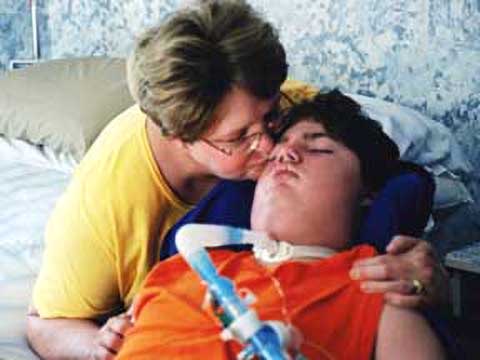
Photo courtesy Charyl Walsh-Bellville
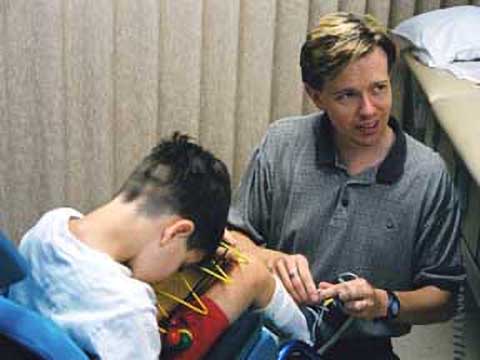
Photo courtesy Charyl Walsh-Bellville
